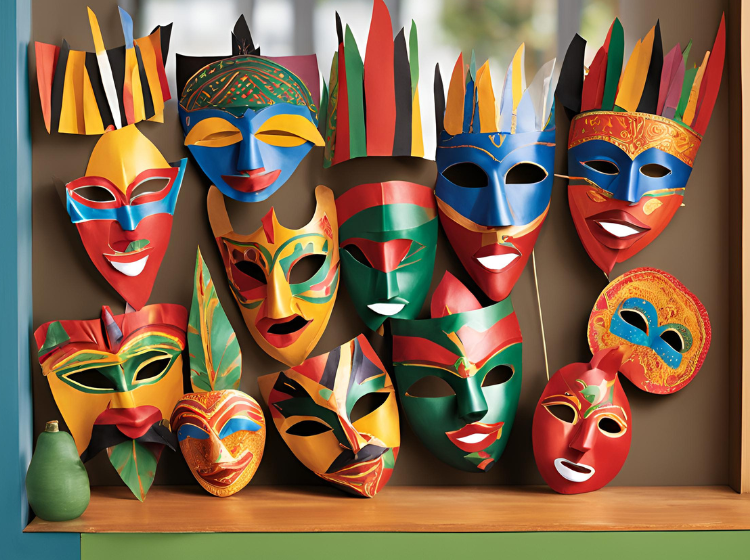Kwanzaa is a vibrant and meaningful holiday celebrated from December 26 to January 1, focusing on African heritage, culture, and community. Established in 1966 by Dr. Maulana Karenga, Kwanzaa emphasizes seven core principles known as Nguzo Saba, which promote unity, self-determination, collective work, cooperative economics, purpose, creativity, and faith. Engaging in crafts during Kwanzaa is a wonderful way for children to learn about and celebrate these principles while having fun and expressing their creativity.
In this blog, we’ll explore 18 creative Kwanzaa crafts that kids can easily make with simple materials. Each craft not only reflects the spirit of Kwanzaa but also serves as a way to bond with family and friends during this joyous time.
1. Kwanzaa Kinara

The kinara is a central symbol of Kwanzaa, representing the seven principles through seven candles: three red, three green, and one black. This craft provides children with a hands-on way to understand the significance of the kinara and its role in Kwanzaa celebrations. To make a kinara, gather construction paper in red, green, and black, along with scissors and markers.
Start by cutting out a base shape for the kinara. You can create an arch-like shape that will support the candles. Next, help your child cut out seven strips of colored paper to represent the candles. Once all the pieces are ready, guide them in gluing the strips to the kinara base, ensuring they place the black candle in the center. Let them decorate the kinara with markers, adding symbols or words that reflect Kwanzaa principles.
This craft not only teaches kids about the kinara but also provides an opportunity to discuss the importance of each candle during the celebration. Once completed, display the kinara proudly during Kwanzaa, using real candles or battery-operated ones for safety.
2. Unity Cup (Kikombe cha Umoja)
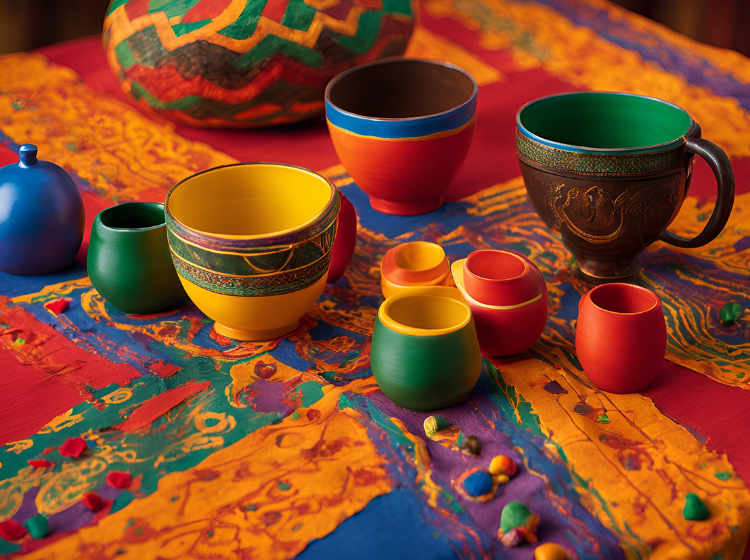
The Unity Cup, or Kikombe cha Umoja, is a symbol of unity and togetherness during Kwanzaa. Creating a decorated Unity Cup is a great way for children to explore this theme. For this craft, you’ll need paper cups, paint, and various decorative items like stickers, glitter, or markers.
Begin by discussing the importance of unity and how families come together to celebrate Kwanzaa. Provide each child with a paper cup and let them paint it in vibrant colors, explaining that these colors represent the African diaspora. After the paint dries, children can personalize their cups with decorations that hold meaning for them, such as symbols of family or community.
Once the cups are complete, use them during Kwanzaa celebrations to serve beverages or as part of a unity ceremony, reinforcing the message of togetherness. This craft not only fosters creativity but also instills the value of community in young minds.
3. African Fabric Art
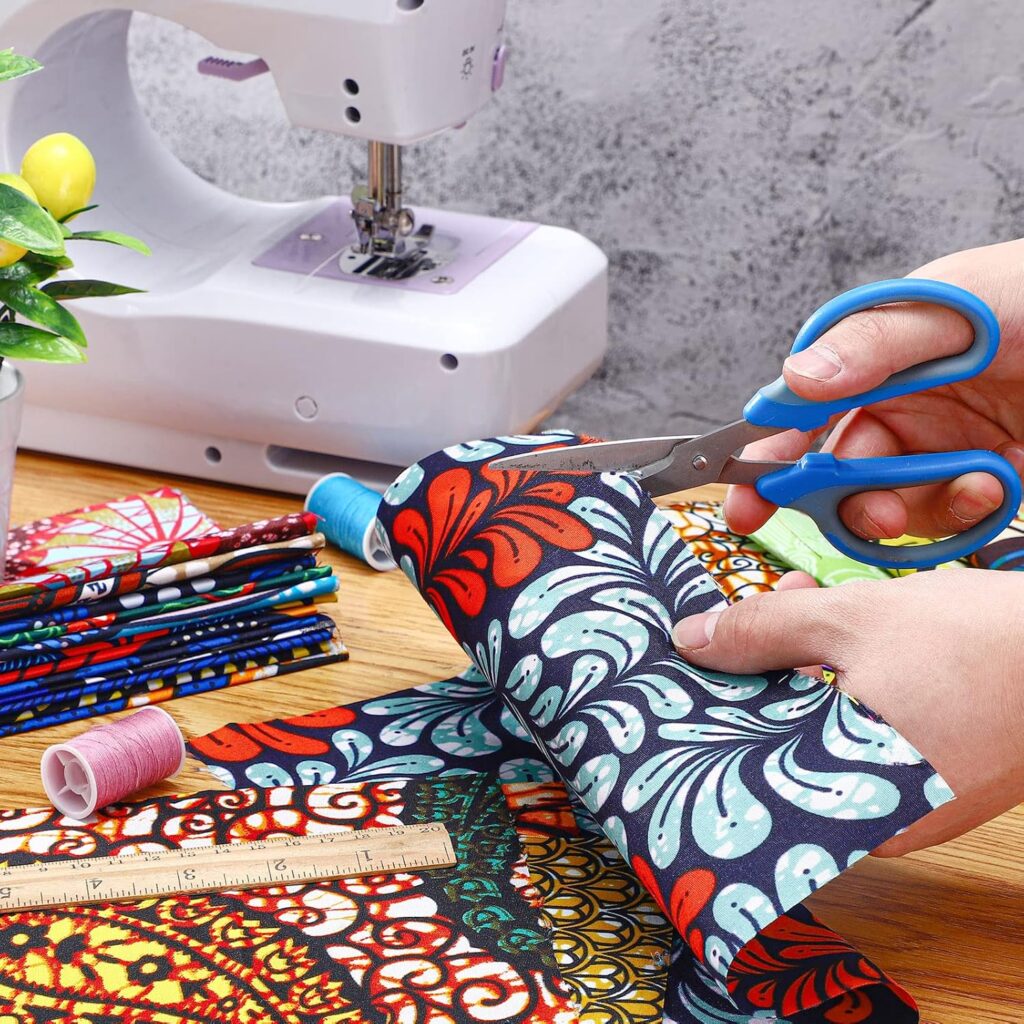
African textiles are rich in color, patterns, and history, making them a fantastic source of inspiration for creative projects. In this craft, kids can create their own fabric art using fabric swatches and canvas. Gather a variety of fabric pieces, glue, and a canvas or sturdy paper as the base.
Start by showing children different patterns and colors in African textiles, discussing their meanings and significance. Let them choose the fabric swatches they like best and guide them in cutting the fabric into various shapes. Once the fabric pieces are ready, help them arrange the pieces on the canvas in a creative pattern.
After arranging, children can glue the fabric onto the canvas, creating a beautiful piece of art that reflects their interpretation of African culture. This craft promotes creativity and helps children appreciate the artistry found in African textiles, encouraging them to learn more about their heritage.
4. Kwanzaa Greeting Cards
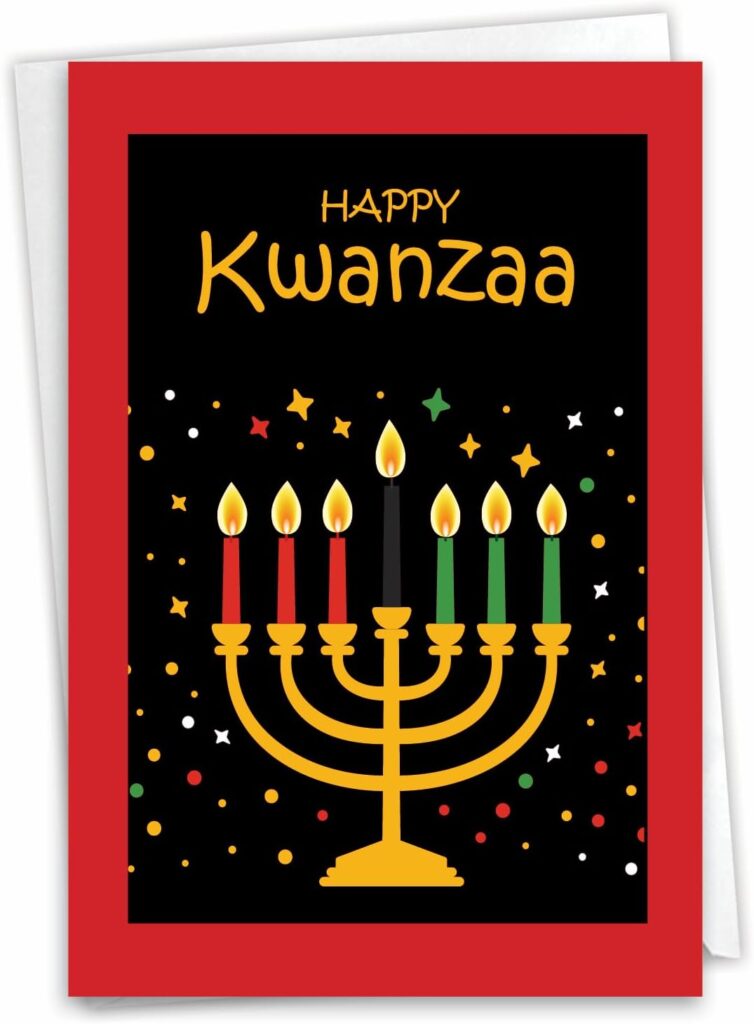
Sending and receiving messages of love and unity is an essential part of Kwanzaa. Creating Kwanzaa greeting cards allows children to express their thoughts and feelings for family and friends. For this craft, gather cardstock, colored pencils, markers, and stickers.
Begin by discussing the significance of sending greetings during Kwanzaa, emphasizing themes of love, unity, and encouragement. Provide each child with a piece of cardstock to fold into a card. Encourage them to design the front of the card with Kwanzaa symbols, such as the kinara or the Unity Cup, using colored pencils and markers.
Inside the card, they can write heartfelt messages or Kwanzaa wishes. Adding stickers or other decorative elements will enhance their designs. Once completed, children can share their cards with family members, reinforcing the holiday’s values of connection and love.
5. Kwanzaa Baskets
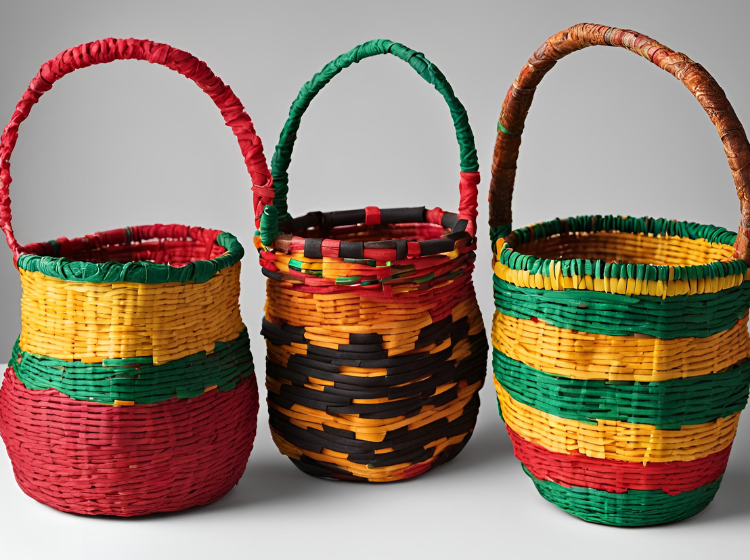
Baskets play a significant role in African culture, representing the importance of community and resourcefulness. In this craft, kids can make their own decorative baskets using paper plates and yarn. Gather materials like paper plates, scissors, and yarn in various colors.
Start by having children cut the paper plates in half, then encourage them to make small cuts around the edges of the plate to create a fringe effect. After that, demonstrate how to weave yarn through the cuts, showing them how to create a basket shape. Allow children to choose colors that represent Kwanzaa or their favorite shades.
Once the weaving is complete, kids can use their baskets to hold small items or as decorative pieces during Kwanzaa. This craft teaches resourcefulness and creativity while connecting children to African cultural traditions.
6. DIY Kwanzaa Decorations
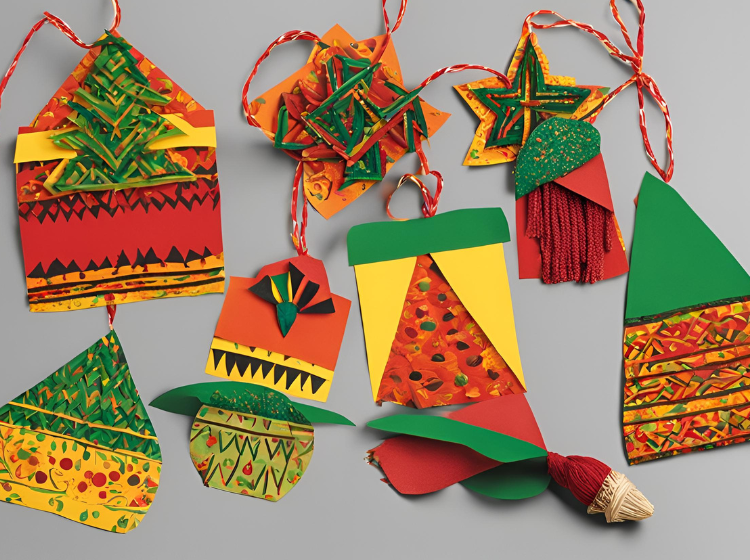
Decorating the home for Kwanzaa enhances the festive spirit, and making DIY decorations is a fun way for kids to contribute. For this craft, you’ll need colored paper, string, and tape or glue.
Begin by discussing different decoration ideas, such as garlands, paper chains, or festive wall hangings. Provide children with colored paper in Kwanzaa colors—red, green, and black—and let them cut out shapes like stars, circles, or triangles. Once the shapes are ready, show them how to string them together or tape them to create a garland or paper chain.
Encourage creativity by letting kids personalize their decorations with drawings or messages reflecting Kwanzaa themes. Once completed, hang the decorations around the house, creating a joyful and welcoming atmosphere for Kwanzaa celebrations.
7. Kwanzaa Story Stones
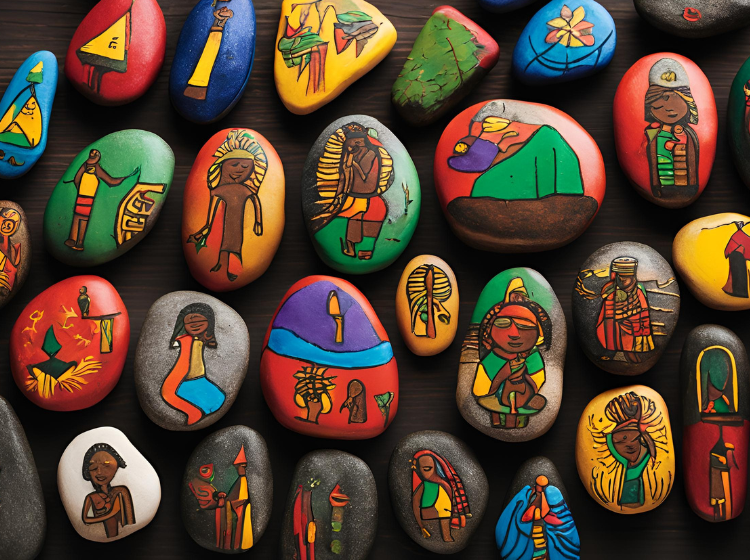
Storytelling is an essential aspect of Kwanzaa, and creating story stones provides a creative outlet for kids to express their ideas. For this craft, you’ll need smooth stones, paint, and markers.
Start by discussing the importance of storytelling in African culture and how stories can convey values and lessons. Provide each child with several stones and encourage them to paint symbols or images that represent Kwanzaa principles or personal stories.
Once the stones are decorated, kids can use them to create their own stories, either individually or collaboratively. This craft encourages imagination and reinforces the idea that storytelling is a powerful way to share culture and values.
8. Cultural Masks
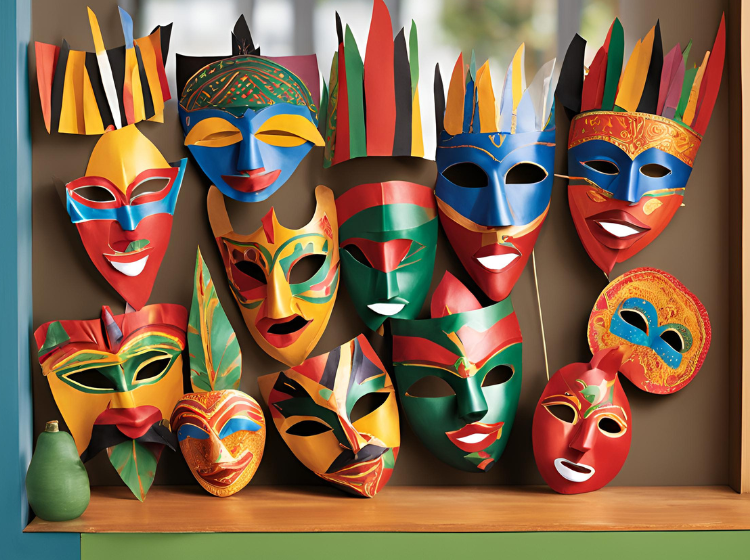
Masks hold cultural significance in many African traditions, representing spirits, ancestors, or stories. This craft allows kids to create their own cultural masks using paper plates, paint, and decorative items like feathers and beads.
Begin by discussing the meaning behind masks in African culture, exploring how they are used in ceremonies and celebrations. Provide each child with a paper plate to serve as the base for their mask. They can cut out eye holes and decorate the mask with paint, adding features or patterns that reflect their creativity.
Once the masks are complete, children can add embellishments like feathers or beads for a unique touch. This craft encourages cultural appreciation while allowing kids to express themselves artistically.
9. Homemade Drums
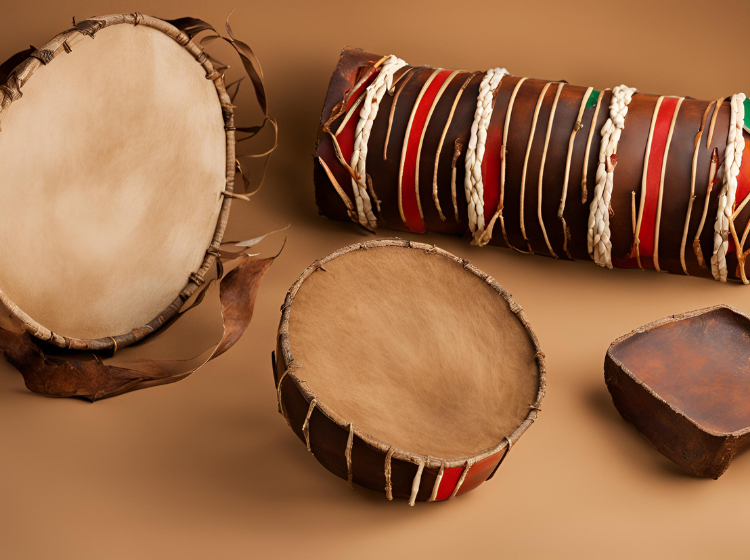
Music and rhythm are vital components of Kwanzaa celebrations. Making homemade drums is an engaging way for kids to explore these elements. Gather materials like empty containers (like coffee cans or plastic tubs), balloons, and tape.
Start by discussing the importance of music in Kwanzaa and how drums are often used in celebrations. Provide each child with an empty container and help them cut a balloon to stretch over the opening, securing it with tape to create the drumhead.
Once the drums are assembled, children can decorate the sides of the containers with paint or markers, allowing them to personalize their instruments. Once finished, kids can play their drums together, creating music and celebrating the spirit of Kwanzaa.
10. Kwanzaa Quilt
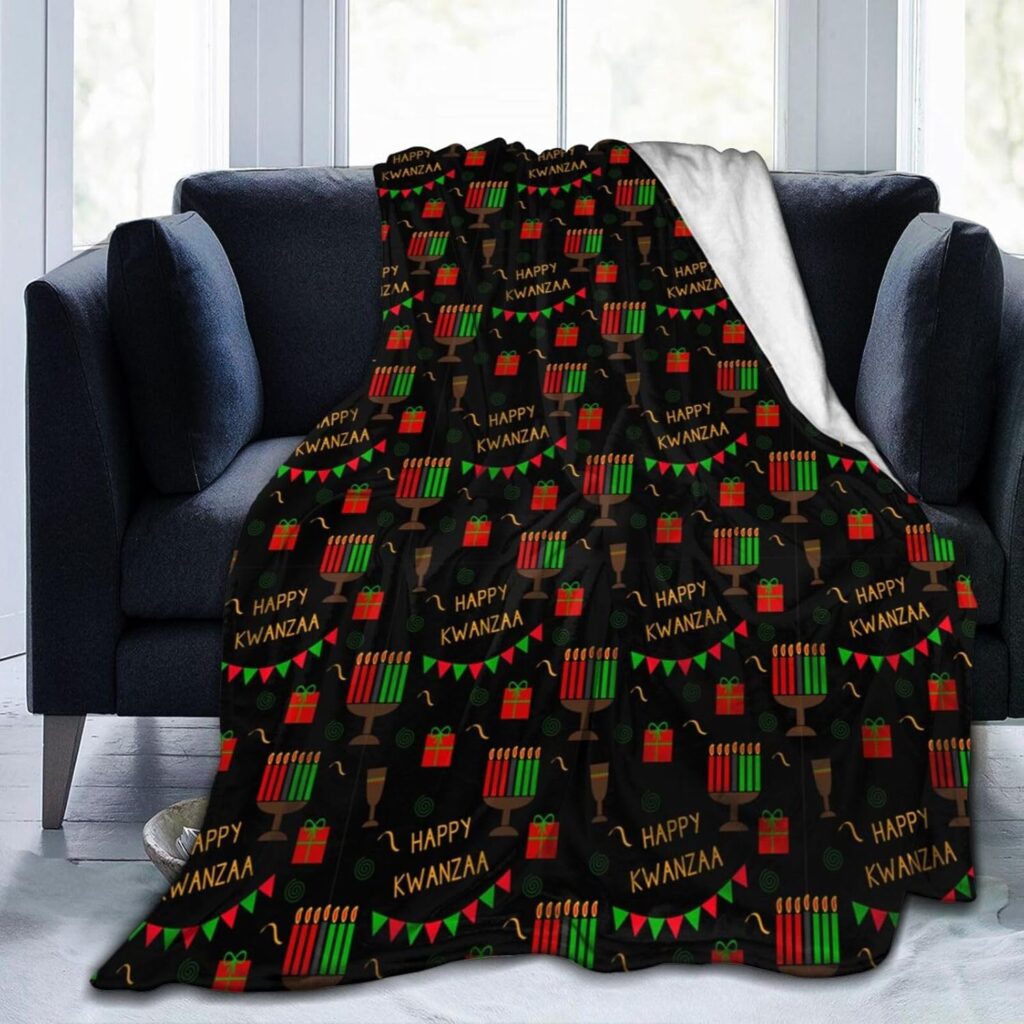
Quilting is an important tradition in many African cultures, symbolizing community and connection. This craft allows kids to create their own mini quilts using fabric squares and fabric glue. Gather materials like fabric swatches, scissors, and a sturdy base like cardboard.
Start by discussing the significance of quilts in storytelling and community. Provide children with fabric squares in Kwanzaa colors and let them arrange them into a quilt pattern on their base. Once they are satisfied with their arrangement, they can glue the fabric squares down.
Encourage children to share the stories behind their fabric choices or the patterns they create. This craft fosters creativity while connecting kids to the tradition of quilting and its importance in cultural heritage.
11. Nature Collage
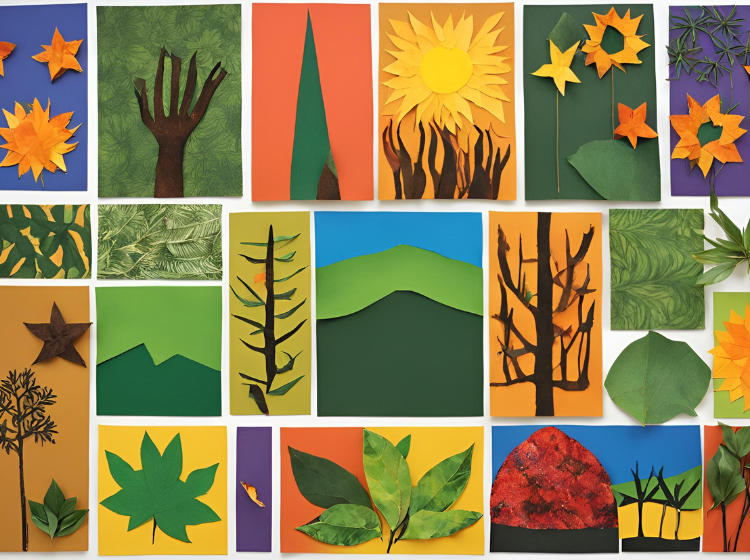
Nature holds great significance in many cultures, and creating a nature collage is an excellent way for kids to appreciate the environment during Kwanzaa. For this craft, you’ll need leaves, twigs, glue, and a piece of cardstock or cardboard.
Begin by discussing the beauty and importance of nature in African traditions and how it connects to Kwanzaa. Take a nature walk with the kids to collect leaves, twigs, and other natural materials. Once back home, provide them with a piece of cardstock as a base for their collage.
Children can arrange the collected materials into a design that represents their interpretation of Kwanzaa or nature. Once they’re satisfied with their arrangement, they can glue the pieces down. This craft encourages creativity while teaching kids about the significance of nature in their heritage.
12. Unity Symbol Craft
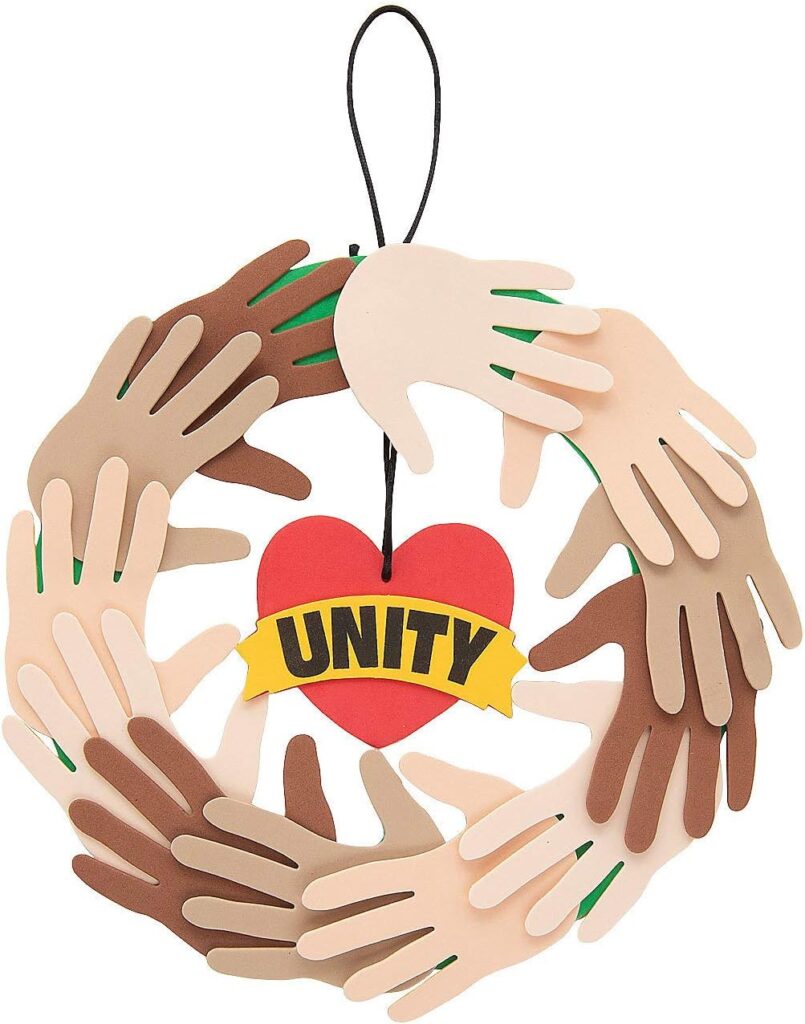
Unity is a central theme of Kwanzaa, and creating symbols that represent unity can help reinforce this principle. For this craft, gather clay or playdough and tools for shaping.
Start by discussing the importance of unity during Kwanzaa and how symbols can represent collective strength. Provide children with clay or playdough and encourage them to create symbols that resonate with them, such as hands joining together or circles representing community.
Once the symbols are crafted, allow them to dry (if using clay) or discuss how they can display their creations. This craft reinforces the idea of unity while allowing for individual expression.
13. Colorful Bead Necklaces
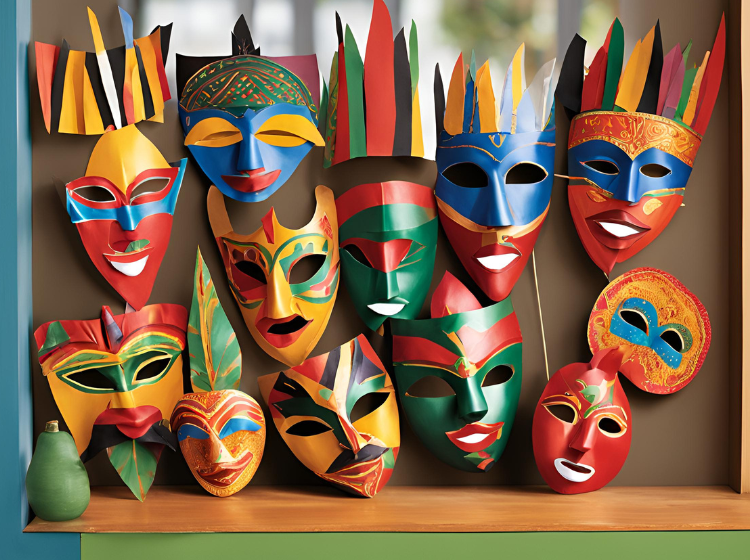
Beadwork is a significant art form in many African cultures, symbolizing beauty and tradition. Making colorful bead necklaces is a fun way for kids to engage with this tradition. Gather materials like beads, string, and scissors.
Begin by discussing the different meanings behind colors in Kwanzaa and how beadwork is used in various cultures. Provide children with an assortment of beads in Kwanzaa colors and let them design their necklaces. They can choose patterns or random assortments, encouraging creativity.
Once they’ve strung the beads on the string, help them tie it off to create a necklace. This craft not only promotes creativity but also teaches kids about the cultural significance of beadwork in African traditions.
14. Kwanzaa Painting
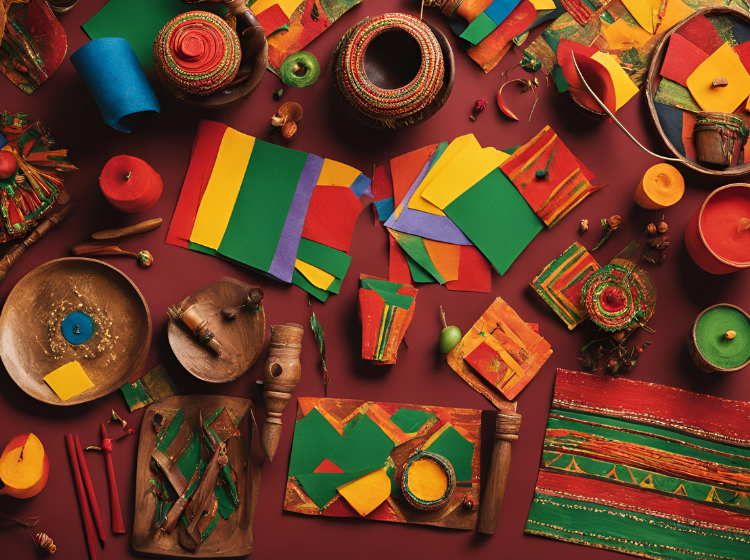
Painting is a wonderful way to express emotions and creativity. In this craft, children can create paintings that reflect Kwanzaa themes and symbols. Gather materials like canvas or thick paper, paint, and brushes.
Start by discussing Kwanzaa symbols, colors, and principles, encouraging kids to think about what Kwanzaa means to them. Provide each child with a canvas and let them paint their interpretations of Kwanzaa, whether through symbols, colors, or abstract representations.
Once the paintings are complete, encourage kids to share their artwork and the meanings behind their creations. This craft fosters creativity and provides an opportunity for children to express their understanding of Kwanzaa through art.
15. Kwanzaa Wheel
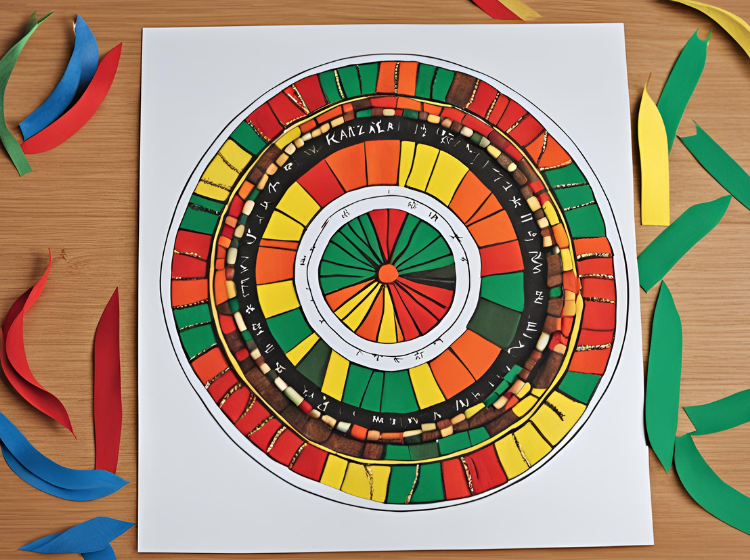
The Kwanzaa principles (Nguzo Saba) are essential to understanding the holiday’s message. Creating a Kwanzaa wheel helps children visualize and learn about these principles. For this craft, gather cardboard, markers, and scissors.
Begin by discussing each of the seven principles: Unity, Self-Determination, Collective Work and Responsibility, Cooperative Economics, Purpose, Creativity, and Faith. Provide children with a piece of cardboard and help them cut it into a circular shape.
Next, guide them in dividing the wheel into seven sections and decorating each section with the corresponding principle, along with symbols or colors that represent it. Once completed, hang the Kwanzaa wheel in a prominent place during the celebrations. This craft reinforces understanding of the principles while engaging children in hands-on learning.
16. Friendship Bracelets
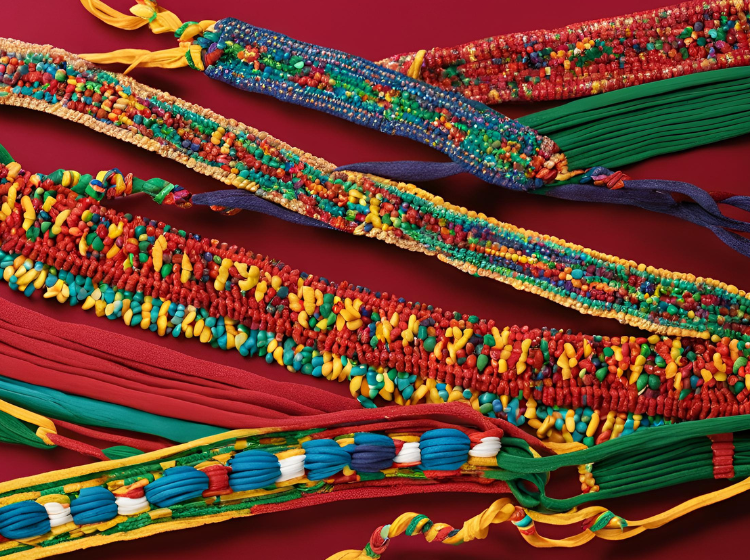
Friendship is a vital aspect of community during Kwanzaa, and making friendship bracelets is a great way to promote this value among kids. Gather materials like embroidery thread and scissors.
Start by discussing the importance of friendships and community during Kwanzaa. Provide each child with several strands of embroidery thread in Kwanzaa colors. Teach them simple braiding or knotting techniques to create their bracelets.
Once the bracelets are complete, kids can exchange them with friends or family members, reinforcing the message of unity and friendship during the holiday. This craft not only fosters creativity but also encourages connection among peers.
17. Kwanzaa Luminaries
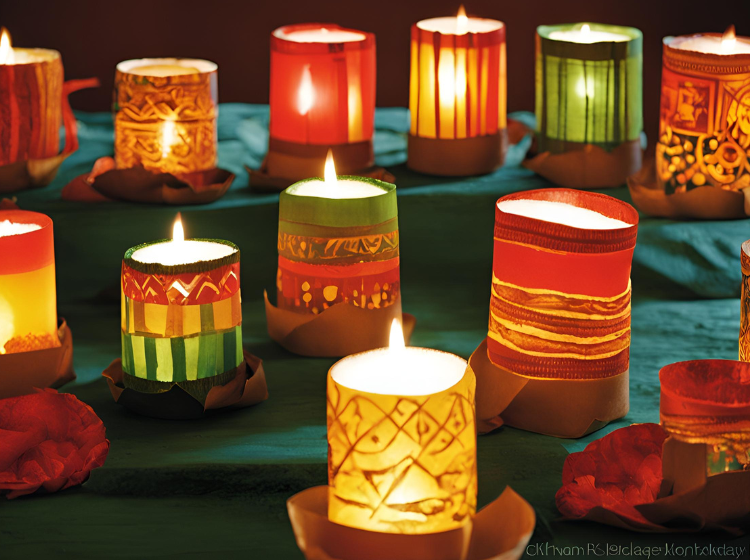
Light symbolizes hope and community during Kwanzaa, and making luminaries is a beautiful way to celebrate this theme. Gather materials like paper bags, tea lights (or LED candles), and decorations.
Begin by discussing the significance of light in Kwanzaa and how it represents the guiding principles of the holiday. Provide children with paper bags and let them decorate them using markers, stickers, or cut-out designs.
Once the bags are decorated, place a tea light or LED candle inside each one. Line them up along a pathway or display them around the house to create a warm and inviting atmosphere. This craft highlights the importance of light and community during Kwanzaa while providing a stunning visual element to celebrations.
18. Kwanzaa Bingo Game
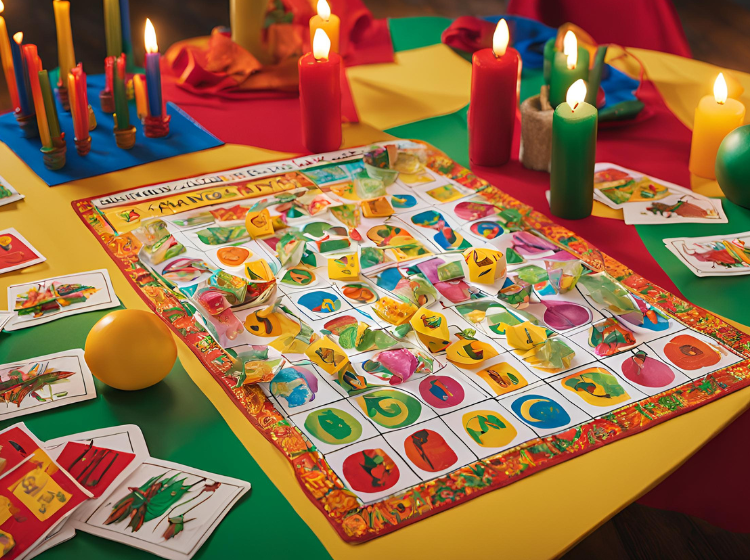
Games are a fun way to engage with Kwanzaa themes and learn about the holiday. Creating a Kwanzaa Bingo game is an interactive craft that kids will love. Gather materials like cardstock for bingo cards and markers.
Start by discussing Kwanzaa symbols, colors, and principles. Help kids create bingo cards with different Kwanzaa-related images or words, such as the kinara, Unity Cup, and the seven principles. Provide each child with markers to use as bingo chips.
Once the cards are complete, play a round of Kwanzaa Bingo, calling out the symbols or words and allowing children to mark them on their cards. This craft combines creativity with learning and provides a fun way to celebrate Kwanzaa together.
Conclusion
Kwanzaa is a time for celebration, reflection, and community. Engaging in these 18 creative crafts allows children to learn about Kwanzaa’s rich heritage and values while expressing their creativity. Each craft serves as a meaningful way to explore the principles of Kwanzaa, fostering understanding and connection among family and friends.
Encouraging kids to participate in these activities not only enriches their knowledge of Kwanzaa but also creates lasting memories. We invite families to embrace these crafts and share their creations, reinforcing the spirit of unity and creativity that Kwanzaa embodies. Happy Kwanzaa!

